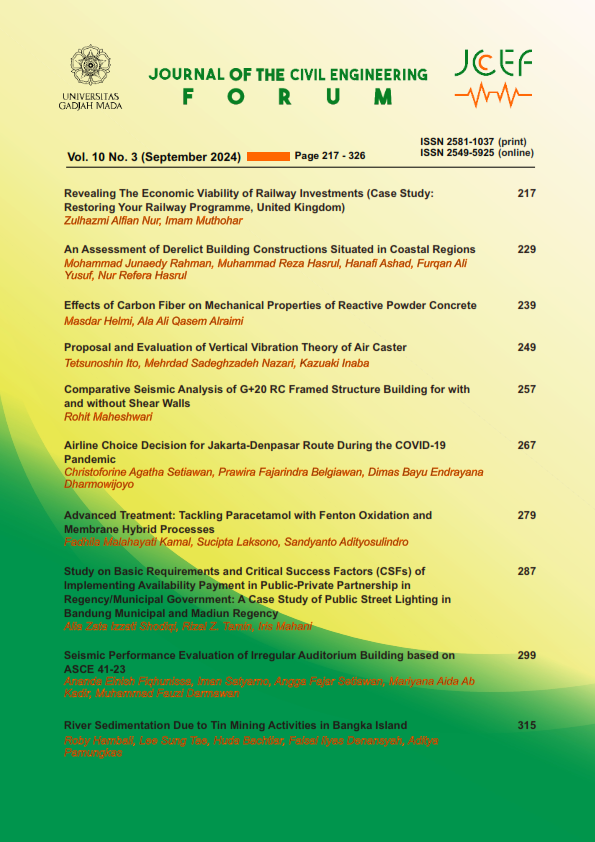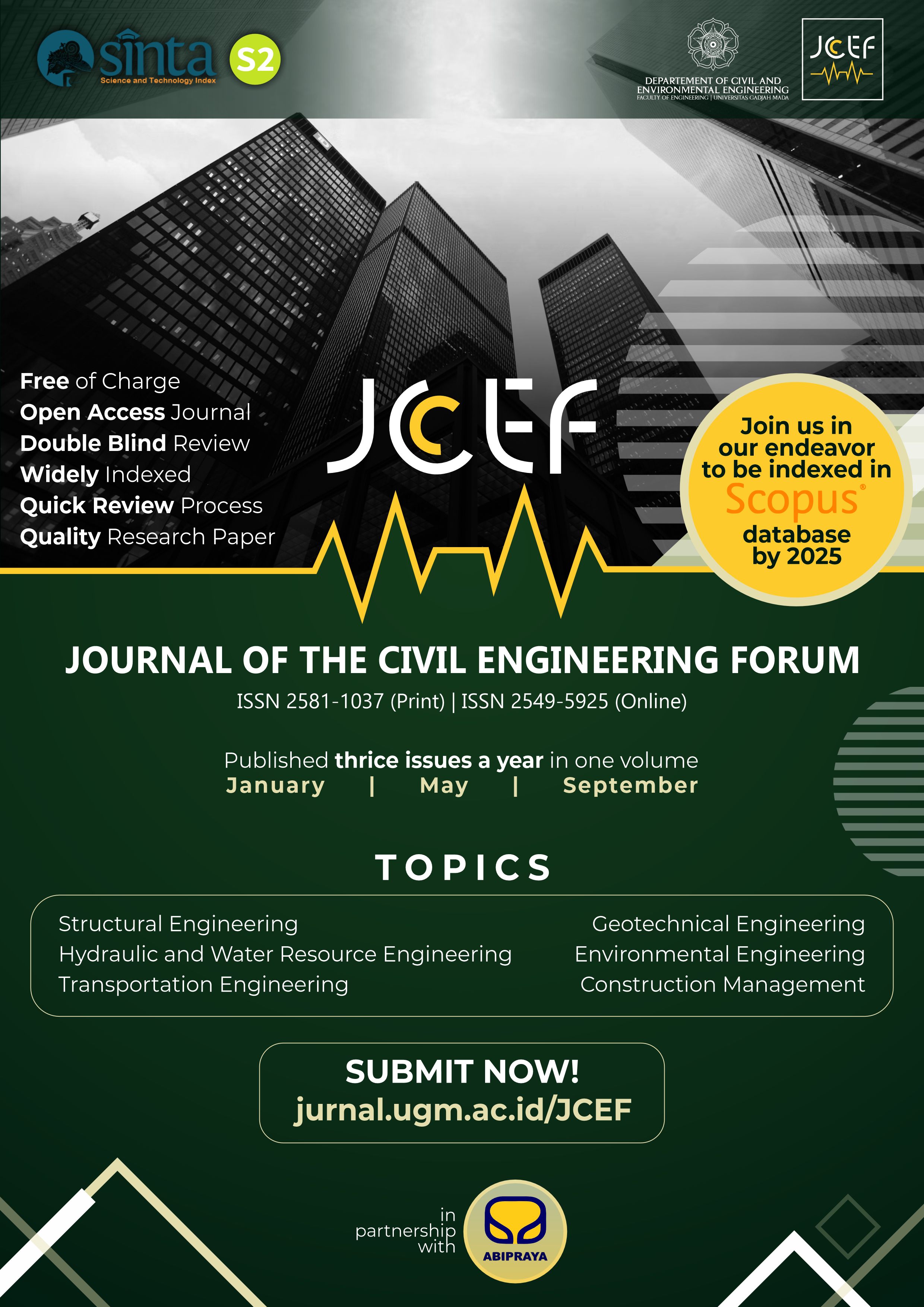Comparative Seismic Analysis of G+20 RC Framed Structure Building for with and without Shear Walls
Abstract
The performance of High-rise Reinforced Concrete (R.C.) design buildings with the shear wall is targeted to provide stability, simplicity of maintenance, and durability of the framed structure. The impacts of lateral loads, axial forces, shear forces, base shear, maximum story drift, and tensile forces are common in high-rise structural systems. The present paper analyses G+20 story R.C. framed buildings for base shear, maximum story displacement and bending moment behaviour of structures with and without shear walls under seismic loading. The building is located in Dehradun, and the load has been considered as per I.S. code 1893:2016. Framed has been analysed using E-tabs to identify maximum base shear for the concern load conditions. The result shows that the frame designed with an appropriate shear wall absorbs more lateral forces, and minimum displacement values are induced and resist maximum moments throughout the height of the building when a structure is appropriately configured with a shear wall. The structure configured with the shear walls has high resistance to absorb earthquake forces compared to structures without shear walls.
References
Computers & Structures Inc. (2016). CSI ETABS v.2015. SAP2000 Reference Manual, July, 556. http://docs.csiamerica.com/manuals/etabs/Analysis Reference.pdf
Dash, S. S. (2015). Seismic Analysis of High-Rise Building by Response Spectrum Method National Institute of Technology Rourkela- 2015.
Hosur, S. K. M. A. & V. (2013). Seismic Performance Evaluation of Multistoried RC framed buildings with Shear wall. International Journal of Scientfic and Engineering Research, 4(1), 2–7.
Kevadkar, M. D., & Kodag, P. B. (2013). Lateral Load Analysis of R.C.C. Building. International Journal of Modern Engineering Research (IJMER), 3(3), 1428–1434. www.ijmer.com
Maheshwari, R. (2022). Comparative Seismic Analysis of G + 20 RC Framed Structure Building for Maximum Drift with and without Shear Wall. International Research Journal of Engineering and Technology, Volume:09(June), 285–292.
Mayuri D. Bhagwat & Dr. P.S. Patil. (2014). Comparative study of Performance of RCC Multi-Storey Building for Koyna and Bhuj Earthquakes. International Journal of Advance Technology in Engineering and Science, 07(05), 67–72. https://doi.org/10.9790/9622-0705024552
Mohan, R. and P. C. (n.d.). Dynamic Analysis of RCC Buildings with Shear Wall Dynamic Analysis of RCC Buildings with Shear Wall. International Journal of Earth Science and Engineering, Volumne 04(october), 659–662.
Rakshith G M, E. a. (2019). Analysis of G + 20 Rc Building in Different Zones Using Etabs. International Journal of Innovative Reseach in Science, Engineering and Technology, 8(5), 5337–5345. https://doi.org/10.15680/IJIRSET.2019.0805063
S.D.Charkha, A. A. &. (n.d.). Effect of Change in Shear Wall Location on Storey Drift of Multistorey Building Subjected To Lateral Loads. International Journal of Innovative Research in Science, Engineering and Technology (An ISO, colume 2(3), 1786–1793. www.ijirset.com
Siva, E. a. (2019). Analysis and Design of G + 20 Residential Rcc Building By Using Etabs in Zone-II. Journal Od Emerging Technologies and Innovation Research, volume 6(3), 5–12.
Soni, M. P. et. a. (2016). Structural Analysis of Multistory Building of Differentshear Walls Location and Heights. International Journal of Engineering Trends and Technology, 32(1), 50–57.
Vardhan, N. M. and A. M. (2017). Analysis of G + 20 Rc Building in Different Zones Using Etabs. INTERNATIONAL JOURNAL OF PROFESSIONAL ENGINEERING STUDIES, 8(3), 179–192.
Yadav, J. C., & Reddy, L. R. (2017). Dynamic Analysis of G + 20 Residential Building in Zone2 and Zone5 By Using Etabs. INTERNATIONAL JOURNAL OF PROFESSIONAL ENGINEERING STUDIES Volume, VIII(3), 333–346.
Copyright (c) 2024 The Author(s)

This work is licensed under a Creative Commons Attribution-ShareAlike 4.0 International License.
Copyright is granted to authors for the purpose of providing protection for articles written to describe experiments and their results. JCEF will protect and defend the work and reputation of the author and are also willing to address any allegations of violation, plagiarism, fraud, etc. against articles written and published by JCEF. JCEF is published under the terms of the Creative Commons Attribution-ShareAlike 4.0 International License (CC BY-SA 4.0). The author holds the copyright and assigns the journal rights to the first publication (online and print) of the work simultaneously.




